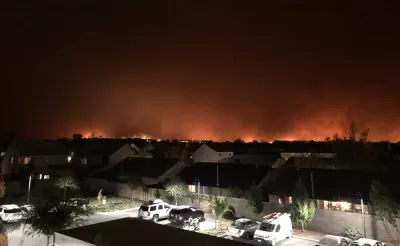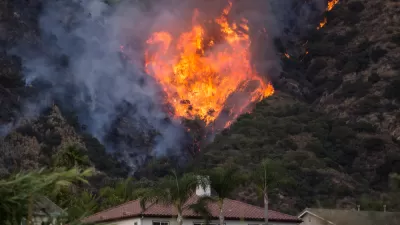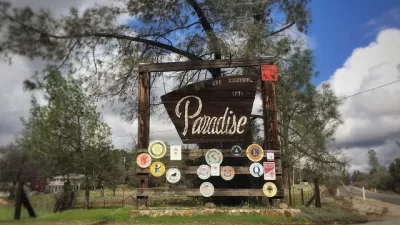A proposed development near the site of the devastating Camp Fire highlights the growing tension between building badly needed housing and protecting communities from heightened wildfire risk.

The conflict between California’s dire housing shortage and the state’s growing wildfire risk is at the heart of a debate over a new development in the Central California town of Chico, where a proposed community would build 3,000 homes and commercial buildings in a fire-prone area just outside of town. The two-year battle over approving the development will be decided by the city council, according to an article by Jake Bittle for Grist and republished in Next City.
Bill Brouhard, the developer of the project, called Valley’s Edge, says the community is designed to be protected from fire and would itself act as a fire break for the rest of the city “thanks to ample parks and trails outfitted with fire-resistant vegetation and pavement.” Brouhard claims the development would actually reduce Chico’s fire risk rather than increase it. “The development will be built in compliance with the latest California fire construction regulations and will be an accredited member of the Firewise program, a nationwide initiative designed to promote fire-safe building practices.”
However, conservationists and other critics say those measures aren’t enough to prevent catastrophe, and that cities should refuse building permits in areas with such high fire danger.
The project illustrates a Catch-22 for the city that is becoming all too common across California and the West. “If Brouhard’s opponents are right, the developer’s pet project could someday become another Paradise. If the project isn’t built, however, the housing crisis in Chico may only get more painful.”
FULL STORY: This California City Needs Housing. But Is A New Development Destined To Burn?

Maui's Vacation Rental Debate Turns Ugly
Verbal attacks, misinformation campaigns and fistfights plague a high-stakes debate to convert thousands of vacation rentals into long-term housing.

Planetizen Federal Action Tracker
A weekly monitor of how Trump’s orders and actions are impacting planners and planning in America.

Chicago’s Ghost Rails
Just beneath the surface of the modern city lie the remnants of its expansive early 20th-century streetcar system.

Bend, Oregon Zoning Reforms Prioritize Small-Scale Housing
The city altered its zoning code to allow multi-family housing and eliminated parking mandates citywide.

Amtrak Cutting Jobs, Funding to High-Speed Rail
The agency plans to cut 10 percent of its workforce and has confirmed it will not fund new high-speed rail projects.

LA Denies Basic Services to Unhoused Residents
The city has repeatedly failed to respond to requests for trash pickup at encampment sites, and eliminated a program that provided mobile showers and toilets.
Urban Design for Planners 1: Software Tools
This six-course series explores essential urban design concepts using open source software and equips planners with the tools they need to participate fully in the urban design process.
Planning for Universal Design
Learn the tools for implementing Universal Design in planning regulations.
planning NEXT
Appalachian Highlands Housing Partners
Mpact (founded as Rail~Volution)
City of Camden Redevelopment Agency
City of Astoria
City of Portland
City of Laramie




























